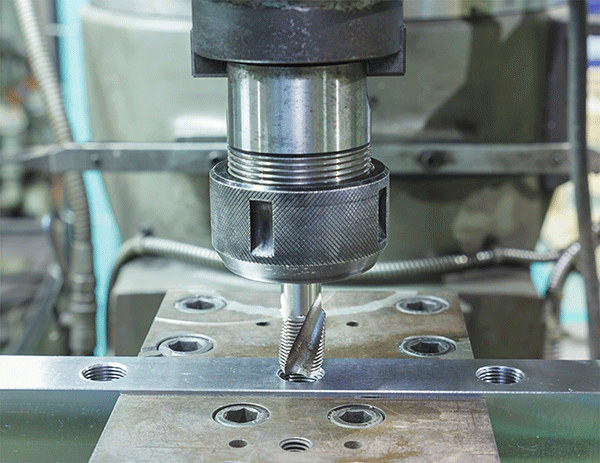Cutting taps and forming taps produce threads that are interchangeable and gauge identically, but those are the only similarities between the two tapping styles.
Cutting Taps
When machinists need to create internal threads, they opt for cutting taps. Cutting a tap means using tools that remove material from the tapped hole, according to North American Tool. This process then leaves an internal thread that meets the machinist’s desires.
A machinist achieves that geometric precision by using tools that come with a feature called the chamfer, which cuts a 90-degree angle or edge to make it more symmetrical. This gradual cutting motion allows a tap to smoothly enter a hole.
Forming Taps
Unlike cutting taps, forming taps create external threads. Forming taps involves the displacement of a material (like metal) within a hole. Additionally, forming taps usually require a larger hole because this style causes a material to thread away and into the threads of the tap.
Cutting Taps vs. Forming Taps
The two threading methods tap holes differently, but they also have a handful of other differences, starting with the type of thread each method produces.
Cutting taps are more versatile than forming taps and can be used with more materials. When machinists use forming taps, they can only use the process on aluminum, soft steel and nonferrous metals. But machinists aren’t limited to the materials when they decide to cut taps.
Cutting taps also have the upperhand regarding horsepower, as this threading method requires less power than forming taps.
Formed threads are stronger because the grain flow of materials is compressed at the crest and root of the thread form. Compare that to cut threads, which because of the tools used, cause grain structure to essentially fracture.
Also, formed taps have a longer life, as they last about three to 20 times longer than cut taps.
Cutting taps and forming taps both have benefits and limitations from stronger threads to greater compatibility. But it’s the machinist who decides which tapping style to use depending on the job at hand.
Read more:
The Tapping Process: Important Techniques and Factors
Four Types of Taps and How They’re Used to Create Hole Threads
